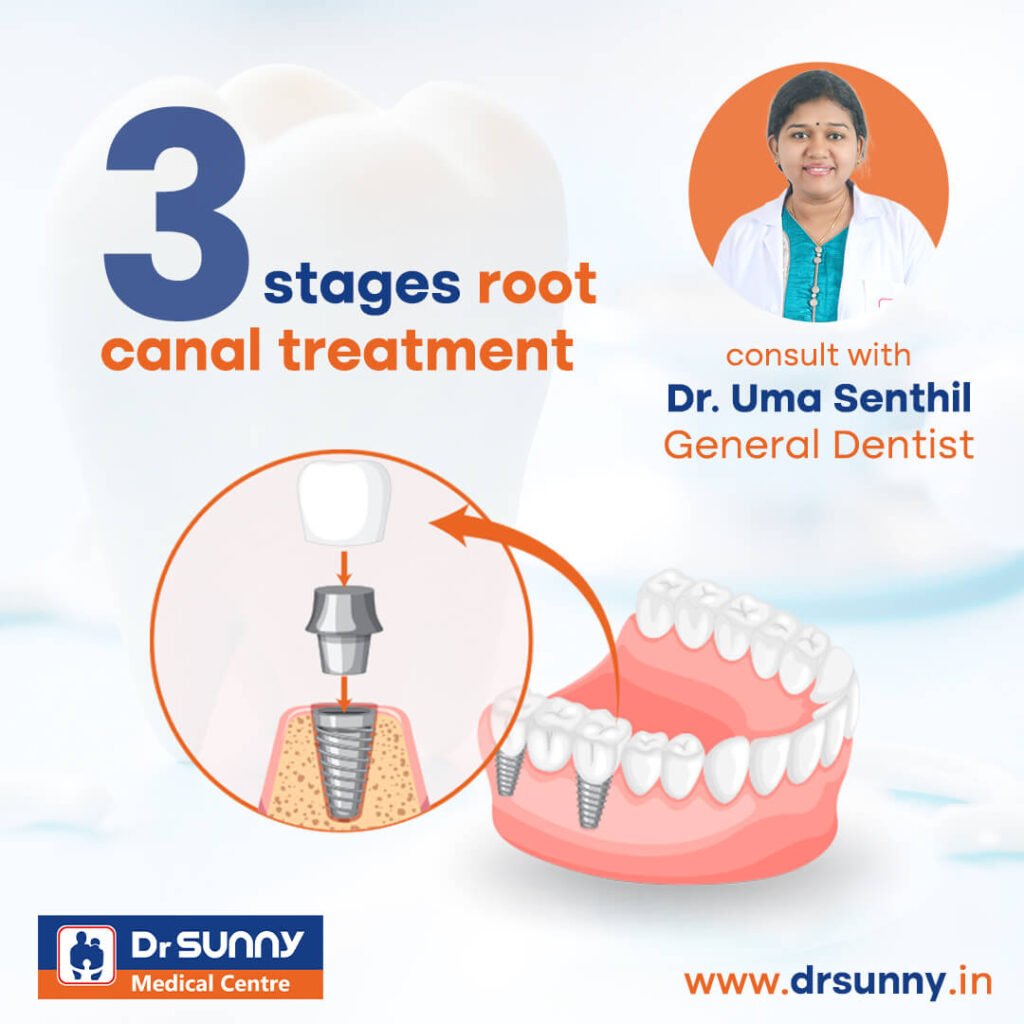

One of the most common dental problems encountered by anyone is the root canal problem. The need for root canal process arises when the bacteria invade the pulp inside your tooth. Though it has become a common dental procedure but still there is not much awareness regarding when it is needed and how it is done. In this blogpost we will discuss the signs that indicate one needs root canal and the stages of the treatment.
Signs that you need Root Canal Treatment
There are few obvious signs that indicate that you require a root canal treatment on an urgent basis:
Swollen gums: If the tooth is infected pus can accumulate in the gums and lead to puffy and swollen gums.
Extreme tooth pain: Though tooth pain is a common symptom for many teeth related problems but extreme tooth pain that also radiate to your jaw, face or other teeth could be a sign of root canal problem.
Sensitivity to hot & cold food items: If you experience sensitivity to a hot coffee or cold ice-cream, especially if the pain lingers for more than a few seconds it may be a signal that you need root canal treatment.
Stages of root canal treatment
Root canal treatment typically involves three stages:
Diagnosis and Preparation: In this initial stage, our dentist examines the tooth and takes X-rays to determine the extent of the infection or damage. Local anesthesia is administered to ensure a comfortable experience for the patient. Later an access point is created by drilling a small hole in the tooth, reaching the pulp chamber and root canals. The infected or damaged pulp is carefully removed using specialized tools.
Cleaning and Shaping: Once the pulp is removed, our dentist proceeds to clean and shape the root canals. This step is crucial to eliminate any remaining bacteria, debris, or infected tissue. Small files and irrigating solutions are utilized to thoroughly clean the canals and ensure they are free from any contaminants. The canals are shaped to allow for proper filling and sealing in the next stage.
Filling and Sealing: After the canals are cleaned and shaped, they are filled with a biocompatible material called gutta-percha. This rubber-like material is placed into the canals and sealed using a dental adhesive. The access point created in the first stage is then sealed with a temporary or permanent filling. In some cases, a dental crown may be recommended to protect and strengthen the treated tooth.
It’s important to note that the number of visits required for root canal treatment can vary depending on the complexity of the case and the patient’s individual circumstances. Our dentist will guide you through the process and provide the necessary information and instructions specific to your treatment.
Contact Us:
With over 15 years of experience, Dr. Uma Senthil associated with Dr. Sunny Medical Centre, Kasavanahalli has carved a niche for herself as a general dentist. By choosing Dr. Uma as your general dentist you can be rest assured that your dental issues including root canal problem will be tackled with unparalleled expertise. If you have any other queries, feel free to get in touch with us, our staff will be more than happy to guide you further.
